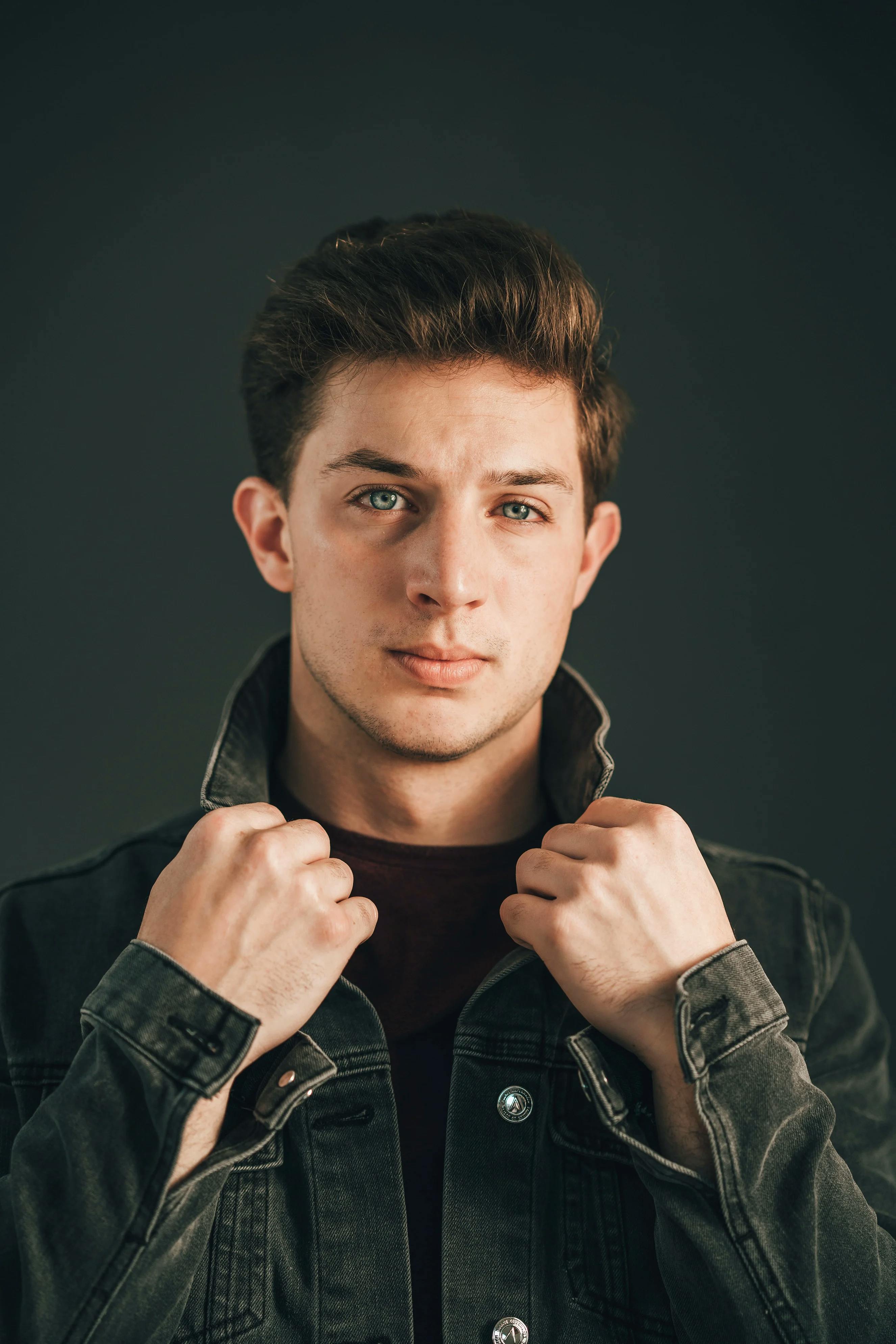Importance of Professional Actor Headshots

Actor headshots, much like model headshots are more than just pictures – they are your calling card in the acting industry. They serve as your first impression to casting directors and can make or break your chances of landing a role. The perfect headshot should not only capture your physical appearance but also project your range as an actor and your unique personality.
Casting directors often sift through hundreds of headshots for a single role, and a professionally taken, compelling headshot can help you stand out from the crowd. It is essential that your headshot looks like you on a good day, ensuring the casting director recognizes you when you walk into the audition room.
Remember, your headshot is not just about showcasing your looks; it should also convey the breadth of characters you can portray. Investing in high-quality actor headshots is thus one of the most critical steps in building a successful acting career.
How to Prepare for an Actor Headshot Session
Preparing for a headshot session requires thoughtful consideration of your image and what you want to convey as an actor. Start by getting a good night's sleep before the session to ensure you look rested. Maintain a healthy diet and stay hydrated to keep your skin looking fresh.
Wardrobe is crucial - bring a range of clothing that matches the roles you aim to audition for. Solid colors often work best, avoiding patterns that may distract from your face. Ensure your clothes are clean and well-fitted.
Finally, arrive with a clean face and styled hair. If you are working with a makeup artist, they will want to start with a blank canvas. If not, apply natural-looking makeup and ensure your hair is under control but not overly styled.
The Different Styles of Actor Headshots
There are several styles of actor headshots, each suited to different needs and contexts. Theatrical headshots are more dramatic and convey depth of character, while commercial headshots are typically brighter and more approachable, emphasizing a friendly, sellable look.
Another distinction is between studio and natural light headshots. Studio headshots offer controlled lighting and a plain background, allowing the actor's face to be the central focus. Natural light headshots can provide a softer, more spontaneous look, which may suit certain types of actors or roles better.
Crucially, the way an actor poses also varies with different headshot styles. A more serious, introspective pose might be chosen for theatrical headshots, while a friendly, engaging pose may be preferred for commercial headshots. Even though most headshot poses focus on your face and shoulders, the subtle body language communicated through your pose can provide a sense of your character range.
Lastly, there are traditional and modern headshots. Traditional headshots tend to be closer, featuring the actor's face and possibly the shoulders, while modern headshots may include more of the body and make use of different angles and creative composition.
Choosing the Right Photographer for Actor Headshots
Choosing the right photographer for your actor headshots is crucial. But in today's digital age, not all headshots need to be taken by a traditional photographer.
If you're considering a traditional photographer, start by researching those who specialize in actor headshots. Look at their portfolios and see if their style aligns with what you want. Consider the photographer's reputation and experience. Read reviews and testimonials, and consider reaching out to other actors who have worked with them.
Lastly, consider their rates and what's included. While it's important to stay within your budget, remember that a high-quality headshot is a crucial investment in your acting career. Whether you choose a traditional photographer or an innovative AI generator, the end goal remains the same - a compelling headshot that captures your essence as an actor.
The Role of Lighting and Background in Actor Headshots
Lighting and background play pivotal roles in actor headshots. Good lighting can accentuate your features and create depth, making your headshot more compelling. The lighting style can range from bright and flat for a more commercial look, to dramatic and moody for theatrical headshots.
Background headshots, while often overlooked, can significantly impact the overall look of the headshot. It should never distract from your face but should complement your look and the tone of the headshot. Plain backgrounds are a popular choice, while environmental backgrounds can add context and character if done well.
Finally, consider the roles you aspire to play. For instance, if you're targeting dramatic roles, a more intense, contrasted lighting scheme and darker background might serve you best. On the other hand, if you're aiming for commercials or sitcoms, bright, flat lighting on a neutral background could be more appropriate.
Dos and Don'ts for Actor Headshots
When it comes to actor headshots, there are some general dos and don'ts. Do invest in a professional photographer and makeup artist.
Do wear clothes that make you feel comfortable and confident, and that represent the types of roles you want.
Don't overly style your hair or wear excessive makeup; you should look like yourself on a good day. Don't choose distracting backgrounds or wear patterned clothing that draws attention away from your face.
Finally, do make sure your headshot is up-to-date and looks like you. Casting directors expect that the person who walks into the audition room will resemble the person in the headshot.
Check out our article on corporate headshots for additional professional attire tips.
Actor Headshots: Digital versus Print
The debate between digital and print actor headshots is largely a matter of personal preference and what the specific casting call requires. Digital headshots are more versatile and can easily be distributed via email or uploaded to casting websites. They can also be retouched more easily, allowing you to modify your headshot for different roles.
Print headshots are traditional and are sometimes still requested by casting directors. They require more care in terms of printing quality and handling, but some argue they offer a different, tangible connection with the casting director.
It is best to have both options available, ensuring you can meet the requirements of any casting call.
Retouching: How Much is Too Much in Actor Headshots?
Retouching should be used sparingly and aim to present the most polished version of yourself without altering your essential characteristics. The goal is to look like yourself on your best day, not to create a version of yourself that doesn't exist.
Retouching can be used to correct minor blemishes, stray hairs, or uneven skin tone, but avoid alterations that significantly change your appearance, such as reshaping facial features or removing wrinkles.
Remember, authenticity in headshots is crucial. Casting directors want to see the real you, not an overly airbrushed version.
Updating Your Actor Headshots: When and Why
Headshots should be updated regularly to reflect your current appearance. A general rule of thumb is to update your headshot every 1-2 years, or whenever your appearance changes significantly (e.g., a new haircut, weight loss/gain, or aging).
Updating your headshots ensures that casting directors get an accurate representation of what you look like now. Using outdated headshots can lead to misaligned expectations and may jeopardize your chances at auditions.
Also, regularly updating your headshots shows casting directors that you are actively pursuing your career and investing in your professional materials.
Using Your Actor Headshots: Tips for Success
When you receive your new actor headshots, it's time to put them to work! Start by updating your online profiles, including your website and any casting platforms you use. Send your new headshot to your agent if you have one, and use it when applying for roles.
It can be beneficial to have different headshots for different types of roles – a more serious, dramatic shot for theatrical roles and a brighter, friendlier shot for commercial work. Tailoring your headshot to the specific role can help increase your chances of being called in for an audition.
Always bring physical copies of your headshot and resume to auditions. Even in our digital age, many casting directors still appreciate having something tangible to reference.
Conclusion
Actor headshots are an essential part of your toolkit as a performer. They represent you before casting directors and can significantly impact your chances of landing an audition or even a role. Whether you choose to go with a traditional photographer or use our cutting-edge AI generator, remember that your headshot needs to be professional, authentic, and current.
With a good understanding of different headshot styles, preparation tips, and the do's and don'ts, you're well on your way to making a great first impression. It's also worth noting that these principles aren't limited to just acting. Professional headshots are crucial in various fields, each with their own specific considerations. For more on this, consider checking out our articles on LinkedIn headshots and real estate headshots.
With the right approach to your headshots, regardless of your industry, you can ensure you're always seen in the best possible light.
Explore Free Creative Tools
Everything you need to make your photos stand out with our free photo editing tools
